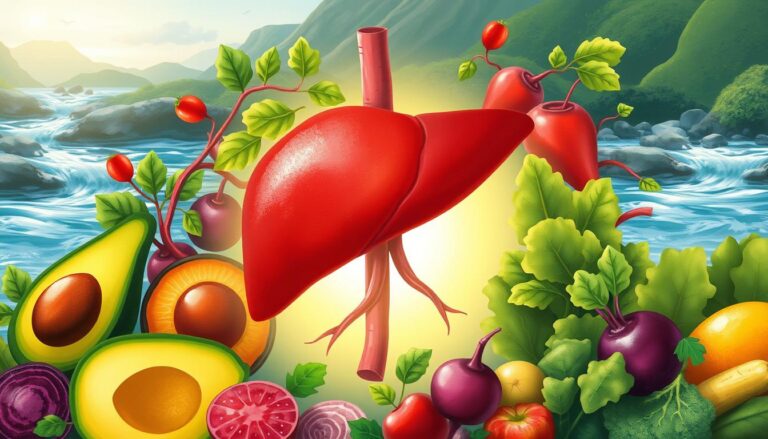Therapeutic diets are key in today’s healthcare world. They help in treating many health issues. But, what makes these diets special? How do they help with different health problems?
Let’s explore the top 11 types of therapeutic diets. We’ll see how medical nutrition therapy helps manage diseases and improve health.
Key Takeaways
- Therapeutic diets are given by doctors to help with specific health issues through food.
- These diets can be changed to meet nutritional needs, texture, allergies, or intolerances. They aim to keep or fix a patient’s nutrition.
- Therapeutic diets are very important for managing long-term conditions like diabetes, high blood pressure, and heart disease.
- To use therapeutic diets well, you need to know the health issue and what the patient needs nutrition-wise.
- Adding therapeutic diets to a treatment plan can greatly help patients and improve their life quality.
Understanding Therapeutic Diets and Their Medical Importance
Medical nutrition therapy is key in healthcare. It changes what we eat and how food feels in our mouths to help with health issues. This helps manage diseases like diabetes, heart problems, and cancer.
Key Components of Medical Nutrition Therapy
The main parts of medical nutrition therapy are:
- Getting the right mix of carbs, proteins, and fats for our needs
- Making sure we get enough vitamins and minerals for health
- Changing food textures to fit certain health needs or diets
Role of Therapeutic Diets in Disease Management
Therapeutic diets are vital for managing health issues. They are made just for each person to meet their nutritional needs. They help:
- Keep blood sugar levels stable for people with diabetes
- Boost heart health and lower heart disease risk
- Help with cancer treatment and nutrition needs
Nutritional Assessment and Planning
To use therapeutic diets well, we need a full nutritional check-up and a plan just for us. Doctors and dietitians look at our health history, current health, and treatment goals. They make diet plans that fit our unique needs. This way, we get the best nutrition support during our health care journey.

“Proper nutrition is a cornerstone of effective disease management. Therapeutic diets empower patients to take an active role in their health by providing the necessary nutritional tools and guidance.”
Top 11 Types of Therapeutic Diets
Therapeutic diets are special plans for certain health needs. They have different foods and rules based on the patient’s health goals. Here are the top 11 types:
- Clear Liquid Diet
- Full Liquid Diet
- Soft Diet
- Cardiac Diet
- Diabetic Diet
- Renal Diet
- High-Protein Diet
- Low-Sodium Diet
- Cancer Diet
- Acid Reflux Diet
- Texture-Modified Diet
Each type of therapeutic diet has a special purpose. They help with digestion, heart health, blood sugar, and more. These medical diet plans are key for specialized nutrition and help manage diseases.
| Therapeutic Diet | Purpose | Typical Restrictions |
|---|---|---|
| Clear Liquid Diet | Provide hydration and minimal residue during acute illnesses or after surgery | No solid foods, limited to clear liquids like broth, fruit juices, and gelatin |
| Full Liquid Diet | Transition from clear liquids to soft, solid foods for patients with swallowing difficulties | No solid foods, includes milk, yogurt, pudding, and smooth soups |
| Cardiac Diet | Promote heart health by reducing cholesterol, blood pressure, and body weight | Low in saturated fat, cholesterol, and sodium |

“Therapeutic diets can be ordered for various reasons, such as maintaining nutritional status, restoring nutritional status, and correcting nutritional status.”
Clear and Full Liquid Diets: Purposes and Applications
Clear and full liquid diets are key in helping patients recover after surgery. They ensure patients get the nutrients they need without irritating their stomachs. These diets are made to be easy on the stomach, helping patients slowly get back to eating solid foods.
Clear Liquid Diet Guidelines
A clear liquid diet includes drinks like broths, fruit juices, and gelatin. It’s often used before surgery to clean out the bowels. It also helps after surgery to prevent dehydration and ease stomach discomfort.
Full Liquid Diet Components
The full liquid diet offers more variety than the clear liquid diet. It includes things like strained soups, pureed fruits, and commercial nutritional supplements. This diet is a step towards eating solid foods again, providing more nutrients while still being gentle.
Post-Surgery Dietary Management
Both diets are important for recovery after surgery. They help keep patients hydrated and ease stomach irritation. Dietitians work with doctors to make sure the diet meets each patient’s needs, helping them gradually move to solid foods.
| Comparison | Clear Liquid Diet | Full Liquid Diet |
|---|---|---|
| Allowed Foods |
|
|
| Nutritional Content | Lower in calories and nutrients, focused on hydration and electrolyte balance. | Higher in calories and nutrients, providing a more comprehensive nutritional profile. |
| Indications | Bowel preparation, initial diet after GI tract procedures, and acute GI inflammation. | Transition from clear liquid to soft diet, used in post-surgical dietary management. |

Clear and full liquid diets are vital for post-surgery nutrition. They help patients recover and stay nourished. These diets provide essential fluids and nutrients, easing the transition back to solid foods.
Soft and Mechanical Soft Diets: Guidelines and Benefits
Soft and mechanical soft diets help those who have trouble chewing and swallowing. These diets include foods that are soft and easy to digest. They are good for people recovering from surgery or those with health issues.
A soft diet includes tender meats, cooked veggies, and soft fruits. These foods are easy on the stomach and don’t need much chewing. Adding sauces and gravies can make the food even softer.
A mechanical soft diet is for those moving from liquids to solids. It includes foods like mashed potatoes and ground meats. These are soft and easy to eat.
The benefits of these diets are many:
- They help people eat well even when they can’t chew much.
- They aid in healing after surgery.
- They protect the mouth and throat from more harm.
- They help people with swallowing issues eat solid foods again.
It’s best to talk to a doctor or dietitian before starting these diets. They can make sure you get the nutrients you need.

| Soft Diet Foods | Mechanical Soft Diet Foods |
|---|---|
|
|
“Soft and mechanical soft diets play a crucial role in maintaining adequate nutrition and promoting healing for individuals with chewing or swallowing difficulties.”
Cardiac and Low-Sodium Therapeutic Diets
Cardiac and low-sodium diets are key for heart health. They help lower risks of heart disease. This includes high cholesterol, high blood pressure, and being overweight.
Heart-Healthy Food Choices
A cardiac diet focuses on foods that are good for the heart. It includes lots of fruits, vegetables, whole grains, and lean proteins. Foods like fatty fish are also important for omega-3 fatty acids.
Sodium Restriction Guidelines
Keeping sodium intake low is vital in a low-sodium diet. Too much sodium can raise blood pressure. Aim for less than 2,000 milligrams of sodium daily.
Managing Cardiovascular Health Through Diet
Following a cardiac or low-sodium diet can greatly improve heart health. These diets, along with exercise and lifestyle changes, can prevent heart disease. This can greatly improve your quality of life.
| Nutrient | Recommended Intake | Food Sources |
|---|---|---|
| Sodium | Less than 2,000 mg/day |
|
| Omega-3 Fatty Acids | 1-2 servings of fatty fish per week |
|
| Cholesterol | Less than 200 mg/day |
|

Diabetic and Carbohydrate-Controlled Diets
Diabetic and carbohydrate-controlled diets are key for managing diabetes mellitus. This condition involves not enough insulin or resistance to it. These diets balance carbs, fats, and proteins to keep blood sugar in check.
For Type I diabetes, it’s crucial to monitor glucose levels and take insulin shots. Type II diabetes is managed through weight loss, exercise, and controlling carbs. These diets help stop the disease from getting worse and prevent serious problems like blindness and poor blood flow.
The Centers for Disease Control and Prevention say over one-third of Americans (133 million) have diabetes or prediabetes. Keeping to a diabetic diet and carbohydrate control is vital for managing blood sugar. The American Diabetes Association suggests eating fruits, veggies, lean meats, and less sugar and processed foods.
The Mediterranean diet is also recommended. It can lower the risk of type 2 diabetes by up to 23% in healthy adults and 52% in older adults at high heart disease risk. This diet focuses on healthy fats, complex carbs, and lean proteins, aiding in blood sugar management.

Using meal planning methods like the plate method and counting carbs can also help control blood sugar. It’s important for people with diabetes to stick to a healthy diet. They should work with healthcare providers, including registered dietitians, to find the best diet for them.
Cancer and High-Protein Therapeutic Diets
Cancer diets are key for patients at different disease stages and treatment times. They focus on high-quality, nutrient-rich foods with more protein. The aim is to aid healing, strengthen the immune system, and keep muscle mass and strength up.
Nutritional Support During Cancer Treatment
Good nutrition is vital for cancer patients getting treatment. Chemotherapy, radiation, and targeted therapies can cause side effects like constipation and nausea. These can lead to weight loss and malnutrition.
Managing Treatment Side Effects
Eating small, frequent meals and foods high in sodium and fiber can help manage side effects. It’s also wise to avoid processed and fried foods during treatment.
Protein Requirements and Sources
More protein is needed in cancer diets to help muscles and recovery. Plant-based proteins like beans and nuts are good choices. Foods rich in healthy fats, like avocados, can also help fight inflammation and improve heart health.
“Maintaining a healthy weight and being physically active can help prevent weight gain and obesity, further reducing the risk of developing cancers.”
Renal and Electrolyte-Controlled Diets
People with kidney diseases or issues with electrolyte balance need special diets. Renal diets and electrolyte-controlled diets help reduce kidney work and keep electrolyte levels right.
These diets limit minerals like sodium, potassium, and phosphorus. This is because these minerals can build up in the blood if the kidneys can’t filter them out. It’s important to plan meals carefully to get enough nutrients while following these limits.
Tailoring the Renal Diet
- Keep sodium under 400 mg per meal and 150 mg per snack to avoid fluid buildup and high blood pressure.
- Limit milk and dairy to 8 oz a day to control potassium intake. Too much potassium can cause muscle weakness and heart rhythm problems.
- Watch phosphorus levels to avoid calcium deposits in the body, which can happen when kidneys don’t work well.
- Adjust protein intake based on the kidney disease stage to help kidneys function and stay healthy.
People on dialysis must also control their fluid intake closely. This is to avoid fluid buildup, which can strain the heart and lungs.
The Role of Renal Dietitians
Renal dietitians are key in making renal diets that fit each person’s needs. They consider kidney function, disease stage, and overall health. By working with patients, they help manage electrolyte control and kidney disease nutrition for better kidney health and overall well-being.
“Proper nutrition is essential for managing kidney disease and preventing further complications. With the guidance of a renal dietitian, patients can develop a sustainable diet plan that addresses their unique dietary needs.”
Conclusion: Implementing and Managing Therapeutic Diets
Starting and managing special diets needs a team effort. This includes doctors, patients, and their families. It’s all about teaching patients, keeping an eye on how they do, and making changes as needed.
Getting help from nutrition experts is key to sticking to the diet. They offer support and advice. This helps patients follow their diet plan.
It’s important to check how well the diet is working often. This helps improve health and quality of life. New research helps doctors give better nutrition advice for different health issues.
Working together is the secret to success. Doctors, patients, and families must all be on the same page. This way, people can handle diet changes and enjoy the health benefits of special diets.





